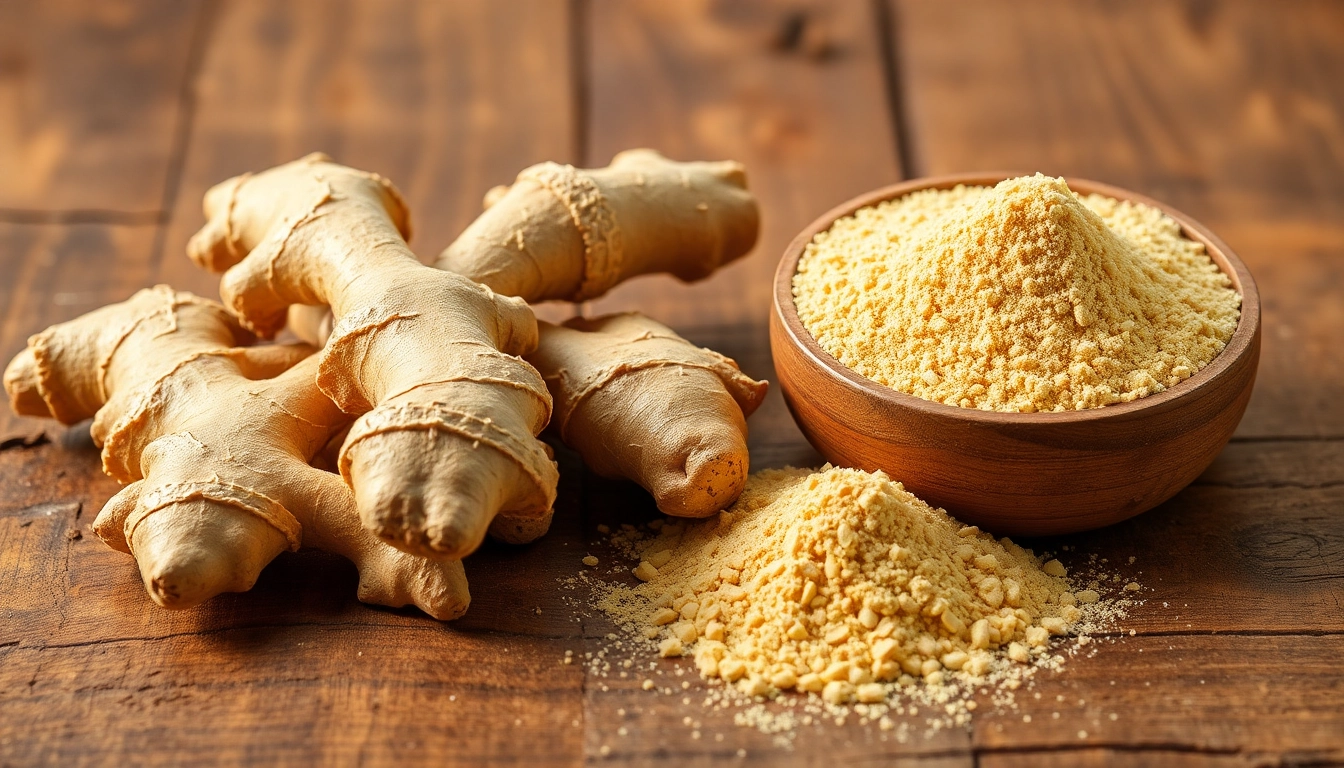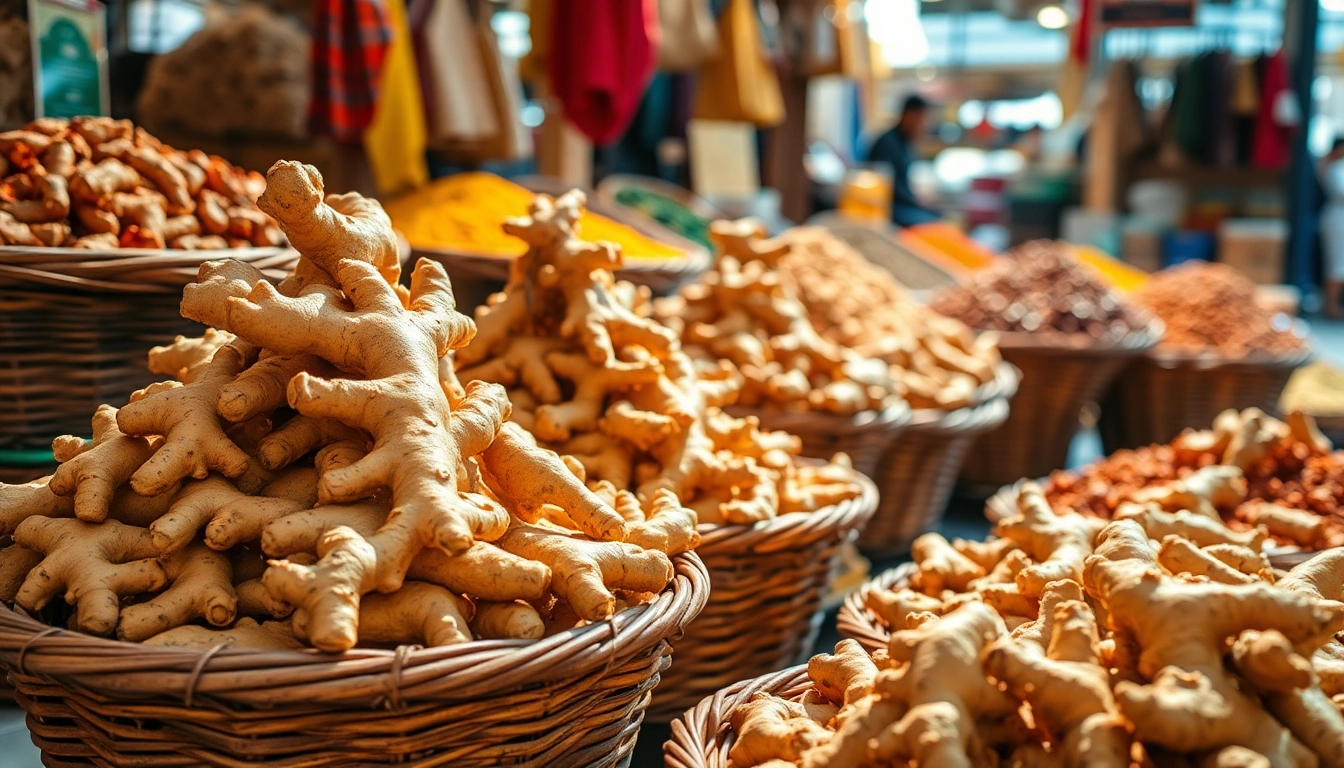Understanding the Benefits of Dry Ginger in Cooking and Health
Dry ginger, renowned for its potent aroma and distinctive flavor, is a staple ingredient in many culinary traditions and traditional medicines worldwide. Its versatility extends beyond just flavor enhancement, offering substantial health benefits backed by scientific research. As a leading manufacturer and exporter, Dry Ginger from Spice Nest has established a reputation for purity, quality, and authenticity. Whether you’re a food manufacturer, chef, or health-conscious consumer, understanding the multifaceted advantages of dry ginger can help you optimize its use in your products and daily diet.
Nutritional Properties and Medicinal Uses of Dry Ginger
Dry ginger is rich in bioactive compounds such as gingerol, shogaol,zingiberene, and gingerdiol, which contribute to its distinctive taste and health-promoting properties. These compounds possess potent antioxidant, anti-inflammatory, and antimicrobial effects. Nutritionally, dry ginger is low in calories but dense in vital nutrients like magnesium, manganese, and vitamin B6.
Medicinally, dry ginger has long been used to address nausea, indigestion, and inflammation. Scientific studies support its role in alleviating symptoms of gastrointestinal disorders, reducing muscle pain, and enhancing immune function. Its thermogenic properties also make it an effective natural aid for weight management. As a natural remedy, dry ginger can aid in combating oxidative stress and supporting cardiovascular health.
How Dry Ginger Enhances Flavor Profiles in Various Cuisines
Dry ginger imparts a warm, spicy flavor that elevates the taste of diverse dishes. Its concentrated aroma makes it particularly valuable in spice blends, curry powders, pickles, and baked goods. In Indian cuisine, for example, dry ginger is essential in masalas, chutneys, and marinades, imparting depth and complexity.
In Western culinary traditions, dry ginger is used in baking (gingerbread, cookies) and beverages (ginger tea, mulled wine). Its ability to harmonize with sweet, savory, and acidic ingredients makes it a versatile component that enhances overall flavor profiles. When used in moderation, dry ginger contributes a subtle heat that awakens the palate without overpowering the dish.
Comparing Dry Ginger with Fresh Ginger: Advantages and Applications
While fresh ginger offers a vibrant, juicy profile, dry ginger provides a concentrated flavor and longer shelf life, making it ideal for commercial supply chains. Dry ginger’s dehydrated form reduces moisture content, inhibiting microbial growth and extending usability. This durability makes it suitable for bulk purchasing, storage, and long-term usage.
Applications of dry ginger include spice blends, powdered seasonings, and infusion extracts, whereas fresh ginger is preferred for cooking, herbal teas, and fresh garnishes. Dry ginger’s potent aroma makes it more suitable for powdered forms, supporting convenience and consistency in processed foods. Additionally, dry ginger retains medicinal properties even after dehydration, making it a preferred choice in health-oriented formulations.
Choosing the Right Quality Dry Ginger for Your Business
Key Factors to Consider: Purity, Aroma, and Color
Selecting high-quality dry ginger hinges on assessing purity, aroma, and color. Purity ensures the absence of adulterants and impurities, vital for maintaining product safety and consumer trust. Aroma is an indicator of freshness and potency; a strong, spicy scent signifies optimum quality. Color should be uniform, typically light to dark brown, without mold or discoloration.
Investing in grading standards and sensory evaluation can assist in sourcing dry ginger that meets your specific quality benchmarks, whether for retail packaging or industrial use.
Certifications and Quality Assurance from Spice Nest
Spice Nest distinguishes itself by adhering to stringent quality standards and certifications, ensuring our dry ginger aligns with international export norms. Certifications such as ISO, HACCP, and organic certifications validate the purity and safety of our products. Our accreditation not only guarantees consistent quality but also compliance with evolving regulatory landscapes, reducing risks associated with contamination and adulteration.
Procuring dry ginger from a certified manufacturer like Spice Nest guarantees a product that upholds industry standards and offers reliability for your business.
Packaging Options and Storage Tips for Maximum Freshness
Proper packaging preserves the aroma, flavor, and phytochemical integrity of dry ginger. Opt for moisture-proof, airtight packing materials such as food-grade vacuum-sealed pouches or sealed cans. Packaging in sizes suited to your business needs—bulk containers for manufacturing or smaller retail packs—optimizes shelf life and convenience.
For storage, keep dry ginger in a cool, dry place away from direct sunlight and humidity. Maintain optimal temperature and humidity levels to prevent clumping and spoilage. Regular inventory rotation and proper labeling further ensure product freshness and quality control.
Incorporating Dry Ginger into Your Product Line
Recipe Ideas and Bulk Usage for Food Manufacturers
Dry ginger serves as a fundamental ingredient in spice blends, marinades, and baked goods. Manufacturers incorporate it into curry powders, masalas, chutneys, and snack mixes to impart warmth and complexity. For example, blending dry ginger with turmeric, cumin, and coriander creates a fragrant curry powder used across various cuisines.
In bulk, dry ginger can be finely ground for powdered spice production or infused in oils for flavor extracts. Its concentrated nature means small quantities can deliver significant flavor, optimizing production efficiency.
Creating Custom Spice Blends with Dry Ginger
Custom spice blends are an effective marketing strategy, creating brand differentiation. Incorporate dry ginger alongside cumin, cinnamon, and pepper to develop signature masalas or seasoning mixes tailored to regional tastes and health trends.
Collaborate with spice experts to balance flavor profiles and ensure ingredient compatibility. Additionally, organic and Halal-certified dry ginger can appeal to specific consumer segments, expanding market potential.
Innovative Marketing Strategies for Dry Ginger Products
Position dry ginger as a health booster, emphasizing its medicinal properties and organic sourcing. Highlight quality assurances and certifications in branding and promotional campaigns. Educational content about its health benefits and culinary uses can attract a wider customer base.
Participate in food expos and trade fairs, such as Biofach, to showcase premium dry ginger offerings. Leveraging digital marketing, including recipe videos and social media promotions, can elevate brand visibility.
Global Market Trends for Dry Ginger Exports
Current Demand and Export Opportunities Worldwide
The global dry ginger market is experiencing steady growth driven by increasing consumer awareness of its health benefits and expanding culinary applications. Countries like the United States, China, and Middle Eastern nations are significant importers, seeking authentic, high-quality dry ginger for both seasoning and medicinal preparations.
Emerging markets in Europe and Southeast Asia present additional opportunities, especially for organic and premium-grade dry ginger. The rising popularity of Ayurveda and natural health remedies globally sustains demand for dried spices like dry ginger.
Trade Shows and Industry Events for Spice Exporters
Participating in trade fairs such as Biofach (Germany), Food & Beverage international expos, and India International Spice Congress offers opportunities to connect with importers, distributors, and retail chains. Ensuring a presence at these events enhances visibility and facilitates valuable business relationships.
Adapting to virtual expos and hybrid events post-pandemic has broadened access, making it easier for exporters to showcase their dry ginger products to a global audience.
Regulatory Considerations and Shipping Logistics
Compliance with phytosanitary regulations and export certifications is vital. Ensuring adherence to destination country standards prevents delays and rejections. Proper documentation, testing reports, and organic certifications streamline cargo clearance.
Efficient logistics—secure packaging, temperature-controlled shipping, and choice of reliable couriers—are critical to maintaining product freshness during transit. Partnering with experienced freight forwarders familiar with spice exports contributes to smooth, cost-effective international trade.
Future Outlook and Innovation in Dry Ginger Products
Emerging Product Formats and Organic Certifications
The future of dry ginger lies in innovative formats such as infused oils, encapsulated powders, and ready-to-use spice mixes. Organic certifications are increasingly sought after, meeting consumer demand for natural, chemical-free products. Brands like Spice Nest focus on organic sourcing and processing, tapping into health-conscious markets.
Research and Development for Health-Focused Formulations
Ongoing R&D efforts aim to develop health supplements and functional foods containing dry ginger extracts. Formulating high-potency capsules, teas, and health drinks enhances market reach. Additionally, exploring combinatorial products like herbal blends with turmeric and ashwagandha broadens product portfolios.
Building Sustainable Supply Chains for Long-Term Growth
Sustainable sourcing—supporting local farmers, promoting organic farming practices, and minimizing environmental impact—strengthens supply chain integrity. Certifications like Fair Trade and Organic verify sustainability claims, appealing to eco-conscious consumers. Transparent traceability systems build trust and ensure consistent quality.

